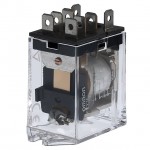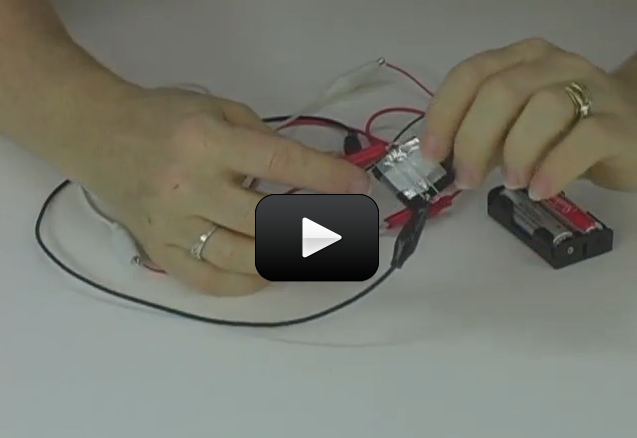 Once you’ve made the Pressure Sensor burglar alarm, you might be wondering how to make the alarm stay on after it has been triggered, the way the Trip Wire Sensor does.
Once you’ve made the Pressure Sensor burglar alarm, you might be wondering how to make the alarm stay on after it has been triggered, the way the Trip Wire Sensor does.
The reason this isn’t as simple as it seems is that the trip wire is a normally closed (NC) switch while the pressure sensor is a normally open (NO) switch. This means that the trip wire is designed to allow current to flow through the tacks when there’s no paper insulating them, while the pressure sensor stops current flowing in it’s un-squished state. It’s just the nature of the two different types of switches.
However, we can build a circuit using a relay which will ‘latch on’ when activated and remain on until you reset the system (by cutting off the power). This super-cool latching circuit video will show you everything you need to know.
Please login or register to read the rest of this content.


I’ll have my team connect with you right away!
We don’t have access to either relay video. Can we do the latching circuit project without them? We have the K-8 program, so the latching circuit video is available but not the relay videos. Why is that? :{)
There’s a couple of different relay videos you might be looking for:
https://www.sciencelearningspace2.com/2011/10/use-a-relay-as-an-electromagnetic-buzzer/
https://www.sciencelearningspace2.com/2010/04/relays-homemade-shockers/
Hi! The lesson and the video mention a separate video on the relay, but we can’t find it. Under materials, the link takes us to the shopping list for unit 11, but there is no relay mentioned on the list for Unit 11. Help!
Check the main shopping list for the unit here… those shopping lists usually have direct order links for unusual parts like the relay.
Where can i get a relay?
This is sooo cool! I hooked it up in my room and now it drives my mom crazy! I love it!!